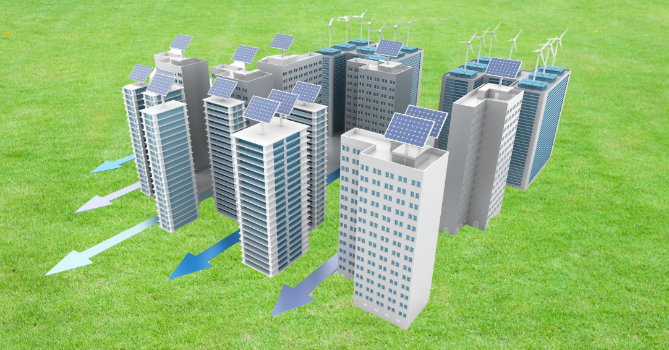
Revolutionizing Architecture: The Digital Innovation Era
We're stepping into an exciting era where architecture meets the cutting-edge world of 3D printing and digital innovation. This journey is not just about constructing buildings; it's about reimagining what's possible in design and execution. With these technologies, architects are breaking free from traditional limits, crafting spaces that were once deemed too complex or too costly. From creating models to full-scale construction, 3D printing and AI are opening doors to sustainable, efficient, and uniquely tailored designs. This blog will dive into how these innovations are shaping the future of architecture, making the design process more dynamic and responsive to our changing world.
3D printing in architecture has journeyed from a novel concept to a cornerstone of modern design, fundamentally altering how structures are envisioned and brought to life. This evolution began with simple model creation, expanding to complex structural components and, now, entire buildings. Innovations in materials and printing technology have pushed the boundaries of architectural design, enabling more intricate, sustainable, and cost-effective constructions. As 3D printing continues to advance, it promises to further unlock creative potentials, offering architects a broader canvas to solve design challenges and realize visions that were once impossible.
To expand, 3D printing's role in architecture has grown from simple prototypes to constructing buildings that defy traditional architectural norms. This progress is fueled by continuous improvements in printing materials and techniques, allowing for greater architectural freedom and precision. Today, architects can experiment with designs that incorporate complex geometries and customized elements without prohibitive costs. The environmental benefits, such as reduced material waste and the ability to use recycled materials, further underscore 3D printing's value. As we look forward, the integration of 3D printing with other digital innovations promises even more sustainable, efficient, and imaginative architectural solutions, reshaping our built environment in profound ways.
AI is transforming architectural design by automating routine tasks, optimizing project planning, and enabling more personalized designs. It assists in analyzing vast amounts of data for site selection, sun path, and wind patterns, significantly improving building efficiency and sustainability. AI tools also foster collaboration among project teams, streamlining communication and project management. By simulating various design and structural options, AI helps architects explore innovative solutions and make informed decisions faster. This integration of AI in architecture paves the way for more intelligent, adaptable, and environmentally conscious buildings, marking a significant shift towards the future of architectural design.
It's worth noting that AI significantly enhances the creative process. It does this by providing architects with predictive analytics and machine learning tools that offer insightful foresight into the lifecycle of a building, from construction to occupancy and beyond. This technology is not just about efficiency; it's also about pushing the envelope of what's architecturally possible, enabling designs that adapt over time to environmental changes and user needs. As AI continues to evolve, its integration into architecture promises to deliver smarter, more responsive, and sustainable living spaces.

Digital technologies in architecture bring several advantages, including streamlined project management, enhanced design accuracy, and the ability to tackle complex problems efficiently. These technologies facilitate improved collaboration among stakeholders, ensuring all voices are heard and integrated from the earliest design stages. Additionally, digital tools allow for significant sustainability gains, enabling the precise use of materials and reducing waste. The adoption of these innovations not only optimizes the construction process but also opens new avenues for creativity, pushing the boundaries of traditional architectural practices.
The advantages of digital technologies in architecture also means highlighting their role in improving resilience and adaptability in buildings. These technologies enable structures to be more responsive to environmental changes and user needs, contributing to the overall well-being of occupants. Moreover, digital advancements are making architecture more accessible, allowing for greater participation in the design process through virtual reality and other immersive tools. This democratization of design is leading to more inclusive and community-focused architectural outcomes.
Integrating digital technologies in architecture isn't without its challenges and ethical considerations. The rapid pace of technological advancement can outstrip the industry's ability to adapt, leading to a skills gap. There's also concern about data privacy and the security of digital models. Ethically, the push towards automation raises questions about job displacement and the devaluation of traditional architectural skills. These challenges require careful navigation to ensure that the benefits of digital innovation are realized without compromising professional integrity or the quality of our built environment.
As we leverage big data and AI, ethical questions about surveillance, privacy, and the potential for exclusionary practices emerge. Balancing innovation with ethical responsibility is paramount, requiring ongoing dialogue among architects, ethicists, and the public to ensure that digital advances enhance, rather than undermine, the social fabric of our communities.
Exploring successful case studies, we find projects that exemplify the power of digital technologies in architecture. One notable example includes the use of AI in optimizing building designs for energy efficiency, significantly reducing carbon footprints. Another case highlights 3D printing's role in constructing a complex, curved structure, showcasing how intricate designs can be realized with precision and less waste. These stories illustrate not only the technological achievements but also the broader impacts on sustainability, efficiency, and creativity in the field.

Success stories in the integration of digital technologies in architecture, additional cases include sustainable urban developments that leverage AI for smarter resource management and 3D-printed housing projects that offer affordable, eco-friendly living solutions. These examples not only demonstrate technological prowess but also emphasize the social and environmental benefits that digital innovations can bring to architecture.
Looking ahead, we anticipate architecture to further embrace sustainability and resilience, integrating digital technologies like AI and advanced materials science. Smart buildings, responsive to their inhabitants and environments, will become more common. Virtual and augmented reality tools will also play a crucial role in design and planning, offering immersive experiences that facilitate collaboration and innovation. These trends point towards a future where architecture not only reflects our technological advancements but also our commitment to environmental stewardship and social well-being.
The future of architecture, deeply intertwined with technological innovation, promises more environmentally adaptive and interactive spaces. As we move forward, the integration of biophilic design, which combines building projects with natural elements, and the use of AI for smarter, more efficient urban planning are expected to rise. Additionally, the exploration of new materials that can self-heal or change according to environmental conditions will further enhance sustainability. This direction not only aims to reduce the carbon footprint of new constructions but also to create spaces that improve the quality of life, indicating a shift towards a more conscious and responsive approach to architecture.
As we've explored, the fusion of 3D printing, AI, and digital technologies is not just shaping the future of architecture—it's redefining it. These innovations promise a more sustainable, efficient, and creative world of design and construction, where the limits are bound only by our imagination. As architects and designers, embracing these tools opens up new horizons for innovation, allowing us to address the pressing challenges of our time while crafting the spaces of tomorrow. The journey ahead is filled with potential; let's build it together.